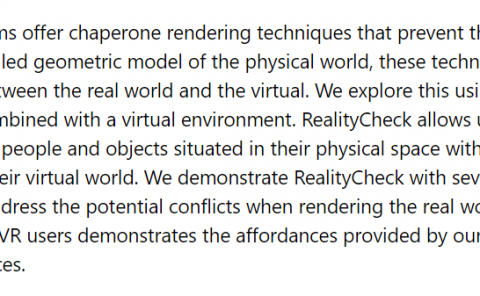Stay in Touch! Shape and Shadow Influence Surface Contact in XR Displays
PubDate: Jan 2022
Teams: Vanderbilt University;University of Utah
Writers: Haley Adams, Holly Gagnon, Sarah Creem-Regehr, Jeanine Stefanucci, Bobby Bodenheimer
PDF: Stay in Touch! Shape and Shadow Influence Surface Contact in XR Displays

Abstract
The information provided to a person’s visual system by extended reality (XR) displays is not a veridical match to the information provided by the real world. Due in part to graphical limitations in XR head-mounted displays (HMDs), which vary by device, our perception of space may be altered. However, we do not yet know which properties of virtual objects rendered by HMDs – particularly augmented reality displays – influence our ability to understand space. In the current research, we evaluate how immersive graphics affect spatial perception across three unique XR displays: virtual reality (VR), video see-through augmented reality (VST AR), and optical see-through augmented reality (OST AR). We manipulated the geometry of the presented objects as well as the shading techniques for objects’ cast shadows. Shape and shadow were selected for evaluation as they play an important role in determining where an object is in space by providing points of contact between an object and its environment – be it real or virtual. Our results suggest that a non-photorealistic (NPR) shading technique, in this case for cast shadows, may be used to improve depth perception by enhancing perceived surface contact in XR. Further, the benefit of NPR graphics is more pronounced in AR than in VR displays. One’s perception of ground contact is influenced by an object’s shape, as well. However, the relationship between shape and surface contact perception is more complicated.

